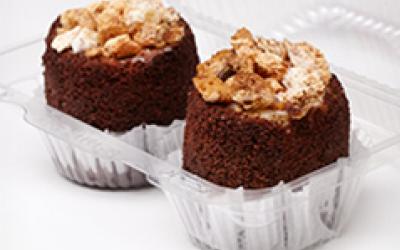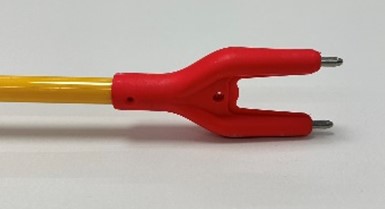Agricultural waste - the new gold?

DSTU scientists have suggested using the cake of mustard seed, camelina seed and lavender spike to enhance the acid-forming properties of beneficial bacteria in the intestines of animals, which helps to reduce the number of harmful bacteria, the AGROPILOT TELEGRAM channel reports. Even 4 thousand tons of such waste will save almost 1 billion rubles a year.
The scientists of ASAU proposed to use waste husks of grain crops in the production of biopolymer containers for seedlings . Such containers are not only more environmentally friendly, but also cheaper - the cost and costs of launching mass production are lower than those of analogues.
In turn, the feed additive for cattle from wood waste, developed by PIMU, increases the average daily MILK yield by 12%, and the fat content and protein content in milk - by 10-15%. Also, amino acids in the composition of the additive improve the palatability of milk, raise the immune factor and the resistance of the animal. In addition, the additive reduces the production of methane immediately by 30%.
The addition of just 6% burnt rice straw increases the strength of concrete by almost 25% and reduces cement consumption by 10%, scientists from Rostov-on-Don found out. And at Moscow State University, activated carbon was isolated from the ashes of rice husks, which can be used in electrodes for supercapacitors - sources of pulsed power.
By the way, Moscow State University and Skoltech were the first in the world to create a sodium-ion battery based on Sosnovsky's hogweed (https://t.me/agro_pilot/1031). it can replace lithium, whose reserves are limited in the world.
Meanwhile, the Federation Council suggested using expired products for the preparation of feed or feed additives. By the way, in the world about 30% of feed is already made from waste. According to the RSHB, the potential volume of secondary processing of bread into feed is about 2 million tons per year, worth more than 20 billion rubles.
Read together with it:
- Матричные РНК-вакцины от COVID продлили жизнь тяжелых раковых больныхМатричные РНК-вакцины против коронавируса продлили жизнь пациентам, больным раком в самой тяжелой, четвертой стадии, сообщает The Washington Post. К такому выводу пришли исследователи Онкологического центра имени М. Д. Андерсона Техасского университета и Университета Флориды. «Эти данные невероятно интересны, но они должны быть подтверждены в ходе третьего этапа клинических испытаний», — заявил од...
- New support measure for the agricultural sector. The Ministry of Agriculture and Food explained the legislative changes.October 21, MINSK . Effective October 20, 2025, a new measure to support the agro-industrial complex in Belarus was introduced: the assignment of raw material zones to processing plants, according to the decree. The Ministry of Agriculture and Food explained the legislative changes, BELTA reports. According to the decree, regional executive committees are authorized to create raw material zones fr...
- Chinese scientists have discovered a new natural meat preservative.In an experiment, cinnamon oil effectively inhibited the growth of Shewanella putrefaciens, a microorganism responsible for the decay of protein products even at low storage temperatures. Even at minimal concentrations, the oil inhibited bacterial growth, damaged their internal and external membranes, disrupted cell integrity, and caused protein and nucleic acid leakage. Additionally, the essentia...
- Russia is developing a new swine flu vaccine based on two strains.The vaccine is being developed using two strains: pandemic H1N1 and classical H3N2, isolated in the Kursk region and Udmurtia. According to Dmitry Biryuchenkov, HEAD of the swine disease prevention laboratory at the All-Russian Research Institute of Animal HEALTH, the vaccine has already demonstrated high efficacy and safety for pregnant sows and piglets. Development is expected to be completed in...
- About shashlik, point of view, and dragons. An interview with Academician D.A. Baimukanov.PIONERPRODUKT.by continues its series of interviews with the eminent Kazakhstani scientist Dastanbek Asylbekovich Baimukanov , recorded by his younger brother, Syzdyk Asylbekovich Baimukanov. The first interview is titled: "A Story of Shepherds, Sheep, and Freedom . " The second interview is titled: " On Beshbarmak, Money, MEAT, Traditions, Genetics, and Selective Breeding." We remind you that num...
- The lifting of the bovine leukemia quarantine in the Kaluga Region marks a new milestone for the agricultural sector.A quarantine was imposed in February 2022 after cases of the disease were detected on a local farm. Bovine leukemia is a viral disease that can significantly reduce livestock productivity and negatively impact farm economies. Throughout the quarantine, veterinary services worked actively to control and eradicate the disease, conducting regular inspections and testing of animals. The lifting of the...
- A large livestock complex has opened in Parokhonsky, Pinsk District.October 9, Brest. A large livestock complex opened on October 9 on the territory of Parokhonskoye JSC in the Pinsk District , BelTA reports. Construction in the village of Kamen began in November 2024. Workers completed the project this September. The farm used its own funds and also secured a loan. Parokhonskoye is focusing on MILK and MEAT production. Facilities are being reconstructed to increa...
- New case of blowfly infestation in cattle in Mexico: details and consequencesMexico's Ministry of Agriculture has confirmed this is the second case of infection in Nuevo León in the past two weeks. Authorities emphasize that strict control measures and mandatory treatment have contained the spread of the parasite. However, the situation remains tense, as the screwworm can pose a serious threat to livestock HEALTH and, consequently, to the country's MEAT industry. The screw...




























































